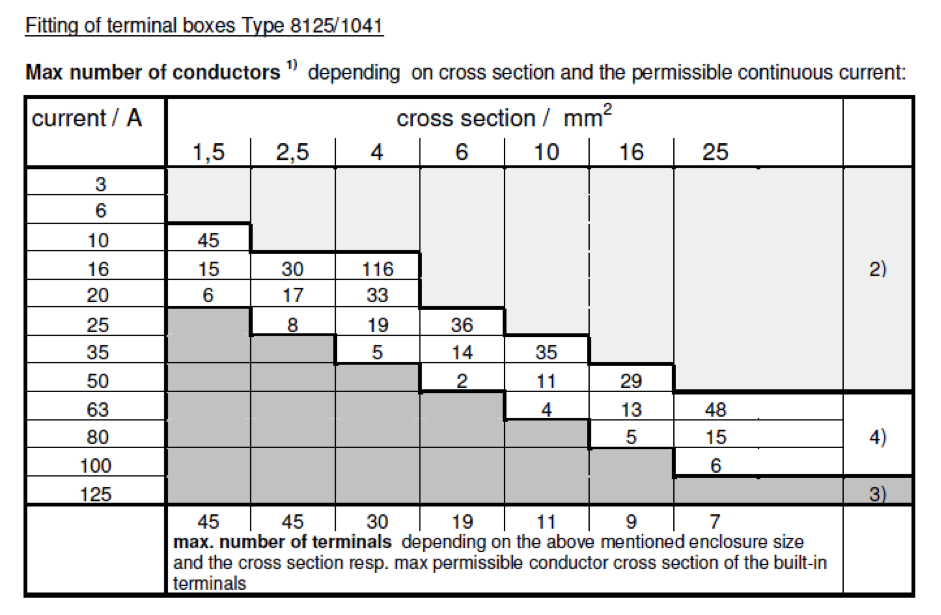4 Easy Facts About Roar Solutions Explained
4 Easy Facts About Roar Solutions Explained
Blog Article
Roar Solutions - Questions
Table of ContentsSome Known Facts About Roar Solutions.Roar Solutions Fundamentals ExplainedIndicators on Roar Solutions You Should Know
In order to protect setups from a prospective surge a technique of analysing and identifying a possibly hazardous location is needed. The function of this is to guarantee the right selection and installment of devices to ultimately prevent a surge and to make sure security of life.
(https://www.twitch.tv/roarsolutions/about)
No devices should be mounted where the surface temperature level of the tools is more than the ignition temperature level of the given hazard. Below are some common dirt dangerous and their minimum ignition temperature level. Coal Dirt 380C 225C Polythene 420C (melts) Methyl Cellulose 420C 320C Starch 460C 435C Flour 490C 340C Sugar 490C 460C Grain Dust 510C 300C Phenolic Material 530C > 450C Aluminium 590C > 450C PVC 700C > 450C Soot 810C 570C The likelihood of the danger being present in a concentration high adequate to cause an ignition will vary from area to area.
In order to identify this danger an installment is divided into areas of threat depending upon the quantity of time the hazardous exists. These locations are described as Areas. For gases and vapours and dirts and fibers there are 3 areas. Zone 0 Area 20 A dangerous ambience is highly most likely to be present and may be present for extended periods of time (> 1000 hours per year) and even continuously Zone 1 Area 21 A harmful atmosphere is feasible yet unlikely to be existing for lengthy durations of time (> 10 450 C [842 F] A classification of T6 implies the minimal ignition temperature level is > 85 C [185 F] Hazardous area electric tools maybe designed for usage in higher ambient temperatures. This would certainly suggested on the rating plate e.g. EExe II C T3 Ta + 60C( This indicates at 60C ambient T3 will not be exceeded) T1 T1, T2, T3, T4, T5, T6 T2 T2, T3, T4, T5, T6 T3 T3, T4, T5, T6 T4 T4, T5, T6 T5 T5, T6 T6 T6 A T Class score of T1 means the optimum surface area temperature level generated by the tool at 40 C is 450 C. Presuming the connected T Course and Temperature level score for the equipment are ideal for the location, you can constantly use a tool with a more rigorous Department ranking than needed for the area. There isn't a clear solution to this question. It actually does depend upon the sort of tools and what fixings need to be executed. Tools with particular test treatments that can't be performed in the area in order to achieve/maintain 3rd event rating. Need to come back to the manufacturing facility if it is prior to the equipment's solution. Field Repair By Authorised Worker: Challenging testing might not be called for nonetheless specific treatments may need to be followed in order for the equipment to preserve its 3rd party score. Authorized employees should be utilized to perform the work properly Repair need to be a like for like substitute. New element have to be taken into consideration as a direct replacement requiring no special screening of the tools after the repair service is full. Each piece of devices with a dangerous rating need to be examined individually. These are laid out at a high degree below, however for more thorough details, please refer directly to the standards.
The Basic Principles Of Roar Solutions
The devices register is an extensive database of devices documents that consists of a minimum collection of areas to determine each item's area, technical specifications, Ex lover classification, age, and environmental data. The proportion of Comprehensive to Shut evaluations will certainly be figured out by the Tools Threat, which is assessed based on ignition risk (the likelihood of a source of ignition versus the likelihood of a combustible ambience )and the dangerous area category
( Zone 0, 1, or 2). Applying a robust Risk-Based Assessment( RBI )method is vital for making certain compliance and security in handling Electrical Devices in Hazardous Locations( EEHA).
7 Simple Techniques For Roar Solutions

In terms of explosive danger, an unsafe area is an environment in which an explosive ambience exists (or might be expected to be present) in quantities that need special safety measures for the construction, setup and usage of devices. eeha training. In this short article we explore the difficulties encountered in the work environment, the danger control measures, and the needed expertises to work securely
These materials can, in certain conditions, create explosive ambiences and these can have significant and unfortunate effects. Many of us are familiar with the fire triangular get rid of any type of Clicking Here one of the three aspects and the fire can not occur, yet what does this mean in the context of hazardous locations?
In the majority of circumstances, we can do little concerning the levels of oxygen airborne, however we can have substantial impact on sources of ignition, as an example electric equipment. Hazardous locations are recorded on the hazardous location category illustration and are identified on-site by the triangular "EX" sign. Here, among other key details, areas are divided into three kinds depending upon the risk, the probability and period that an explosive atmosphere will certainly exist; Area 0 or 20 is considered one of the most dangerous and Zone 2 or 22 is considered the least.
Report this page